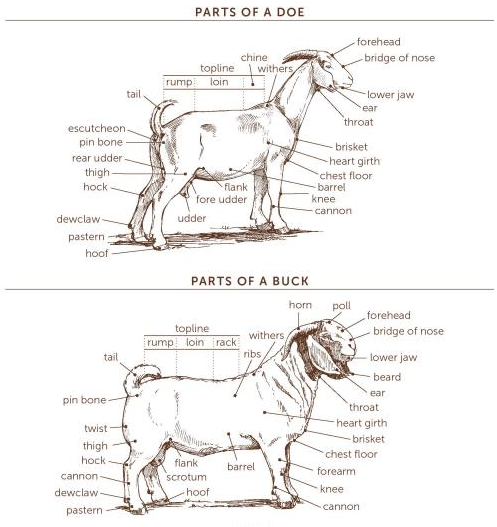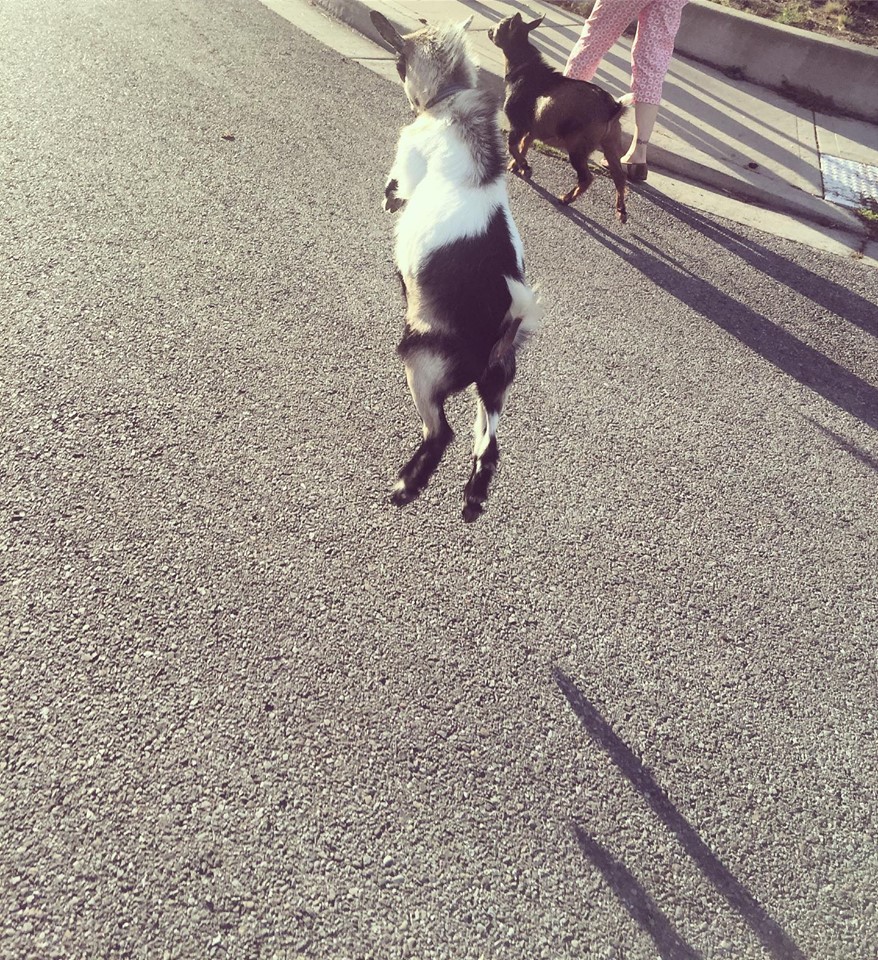Hi, and welcome back to The Little Goat House blog. I’m happy to see you here again! (Pictured above — David bucks with joy at my return, and last evening’s release for a free romp on the neighborhood cull de sac).
I woke up early this morning to snuggle with Petunia, and write. I love everything about dawn, except when it becomes full-blown daylight. Nothing ruins a peaceful, hazy vibe more than the sun blaring down on you at full force.
Fall seems to have set in here at a rapid pace while I was away. Not only are there leaves everywhere — much to the goats’ delight — I’ve also observed that John and David have taken up the goat shed as their primary venue for shut-eye, once again. During the hotter weather, John and David’s preferred location for sleep was the mini trampoline gifted to them by my neighbor. “My kids* keep trying to jump off the big trampoline onto the little one,” Mia said, “and I don’t love it.” So, John and David were the beneficiaries of this plight.
It’s nice when John and David sleep in the barn, because it often means that their initial bleating is forestalled a little bit longer into the morning. The boys have a keen ability to detect motion inside the house, and, once discovered up and about, John and David require my presence in their pen post haste. When ignored, there is a drastic uptick in the frequency, pitch, and overall plaintive nature of the bleating. Luckily, “kid” bleating is far more tolerable on the eardrums than human baby bleating, and can be reasonably withstood for a significant period of time without wanting to claw the eyeballs out.
So for a typical morning with goats, one can expect that it proceeds in the following way (that is, if you’re me). I get up and make coffee. Usually, I neurotically pluck my eyebrows for about 35 minutes in front of the bathroom mirror in an attempt to mute the mounting anxiety of not knowing which of my interminable list of duties I should tackle first. This ritual is punctuated by my flitting back and forth to attend to the demands of my telephone, the cat, and the watering of the front porch plants.
At some juncture, I am spotted by the goats through the large picture window and the full-light French doors that look out onto the back deck and over the goats’ pen from inside the main living area in my home. I begrudgingly don my goat attire (yes, you need separate goat-designated wardrobe for this lifestyle, unless you want all your second-hand Vince sweaters to have small nibble-holes in them), pull myself out the back door, and attend to the morning disbursement of hay flakes.
As this scene unfolds, Petunia becomes increasingly dismayed that she has been left out of the morning meeting of the outdoor social club (I no longer allow Miss Fish outside other than under my strict supervision, as coyotes patrol our neighborhood with alarming frequency). Hopping onto the big windowsill, the Petunafish begins to chatter and “meep” — all the while dragging her side-body enticingly back and forth across the window screen, with a backwards look over the shoulder to pique my interest. We usually engage in a hearty banter of conversationalist trills as I finish up the goat duties before heading back inside.
Now this is where I stop you to point out that no, I have not mentioned milking the goats in this illustration of an average morning of goat motherhood. This is because, yes, my goats — “John” and “David” — are gender conforming males.
Since acquiring goats, I have discovered that a high percentage of individuals I encounter (notably mostly White, high to moderate SES persons) have no idea about the process by which milk is procured or cheese is made. Truth be told, I was even a bit mystified myself, at the beginning. However, I’ve had about 5 years since I mentally decided I would be obtaining goats to do my research, and the time has been bountiful enough for me to grasp the biological difference between “male” and “female” goats. I have included a helpful diagram below for you benefit:

The important part to note is this: female goats have udders — when they “kid” (give birth to baby goats), they produce milk to feed their babies. Male goats do not have udders. Male goats do not kid. Male goats, therefore, do not produce milk.
My goats are male, therefore, I do not milk my goats. Is this revelation as prolific as the one what’s-his-face, Descartes, made?
A helpful way to shut this inane conversation down is to calmly look your interrogator — usually a lady — directly in the eyes, deadpan, and counter-query: “Well, have you ever tried to milk your boyfriend/husband/SO?”
The parallel isn’t lost on them, and a whole new dawn of recognition can be spotted swiftly crossing the face of your interlocuter!
I started to digress here into some other information about the goat-milk process/associated topics, but realized that this commentary is probably better saved for a later, solely-dedicated post.
Singing off for now, with the final note of my sincere apologies for the verbose language today. I tried to limit my indulgence, but was rather unsuccessful.
See ya later!
Tanya
*The word “kids” in this context denotes real human children; for those of you who don’t know, “kids” is also a term commonly and accurately used to reference baby and adolescent goats. As someone with 0% desire to breed Homosapien offspring, you’ll find that I frequently employ this designation ironically with a great deal of joie de vivre.
